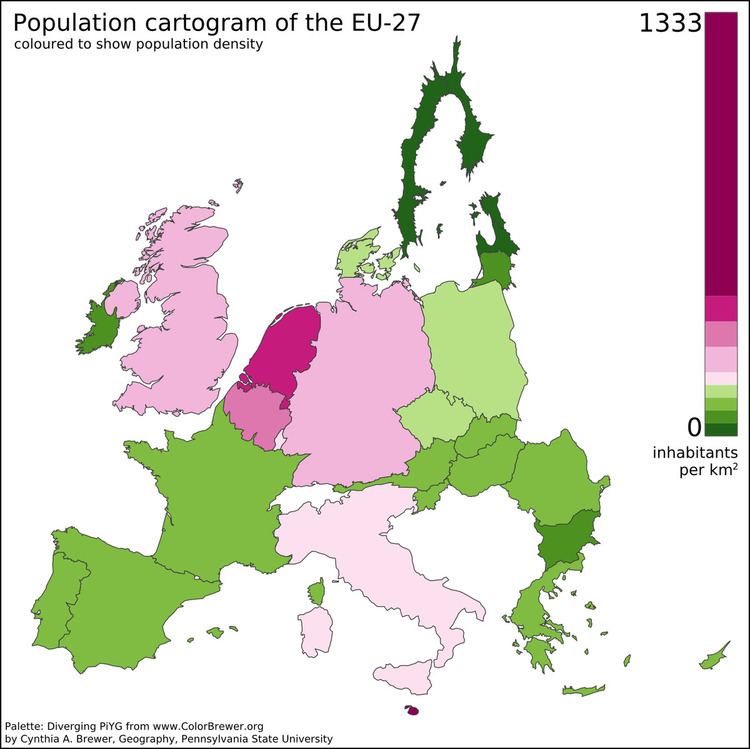 | ||
Statistics in the European Union are collected by Eurostat (European statistics body).
Contents
Area and population
As of 1 January 2006, the population of the EU was about 493 million people. Many countries are expected to experience a decline in population over the coming decades, though this could be offset with new countries planning to join the EU within the next 20 years. The most populous member state is Germany, with an estimated 80.4 million people. France and Ireland have the highest birth-rates. The most densely populated country is the island of Malta, which is also the smallest, while the largest in area is France. The least densely populated country is Finland.
Population figures in the table below are from 2006 or 2007 estimates. The highest and lowest figures in each column have been marked in bold.
Economy
For statistics relating to economy, please see Economy of the European Union.
EU budget
The primary resource for funding the European Union is the contributions sought from member states. Each member state contributes to the EU budget, and receives funding back from the EU, depending on the relative wealth of the states, i.e. their ability to pay.
The table below shows the contributions as a percentage of the total budget. This takes into account the special considerations given to the United Kingdom to reduce its contribution through a rebate. Expenditure in Luxembourg, Belgium and France include items for the EU administrative centres in each of those countries.
Freedom and governance-related rankings
There are many indices available on issues such as corruption, development, and freedom.
Freedom of the press
Reporters sans frontières conducts an annual survey on the freedom of the press and produces scores (not shown here) for each country. In 2013, Finland was proclaimed as having the freest press in the European Union, and indeed the world, with a score of 6.38. Bulgaria was ranked as having the least free press in the European Union, with a score of 28.58. [1]
Economic freedom
An index of Economic Freedom is produced by the Wall Street Journal and the Heritage Foundation. It uses 50 different variables to compile the survey, in areas such as trade policy and government intervention.
A similar index produced by the World Economic Forum is its Global Competitiveness Index.
Source: 2013 Index of Economic Freedom.
Perception of corruption
Transparency International is an international NGO publishing an annual Global Corruption Report indicating the perception of corruption around the world. The rankings of the table refer to the Corruption Perceptions Index 2013 [2].
Human development
The Human Development Index is a measure produced by the United Nations which covers three aspects of human development:
The rankings of the table refer to the UNDP Human Development Report 2014 (2013 data). The UN lists all EU member states except Romania and Bulgaria as countries with very high human development.
Income equality
Income inequality, measured by the gini coefficient is how evenly incomes are distributed through the population. Denmark has the least income inequality with a gini coefficient score of 24.4, whilst Portugal has the most income inequality with a score of 38.5. Malta, Luxembourg, and Cyprus have no statistics available, and so are not included in this table. These statistics have been compiled by the United Nations (see [3])
Ease of doing business
The Ease of Doing Business Index is created by the World Bank and based on the study of laws and regulations, with the input and verification by more than 3,500 government officials, lawyers, business consultants, accountants and other professionals who routinely advise on or administer legal and regulatory requirements.
The data in the table are from the 2017 report.
